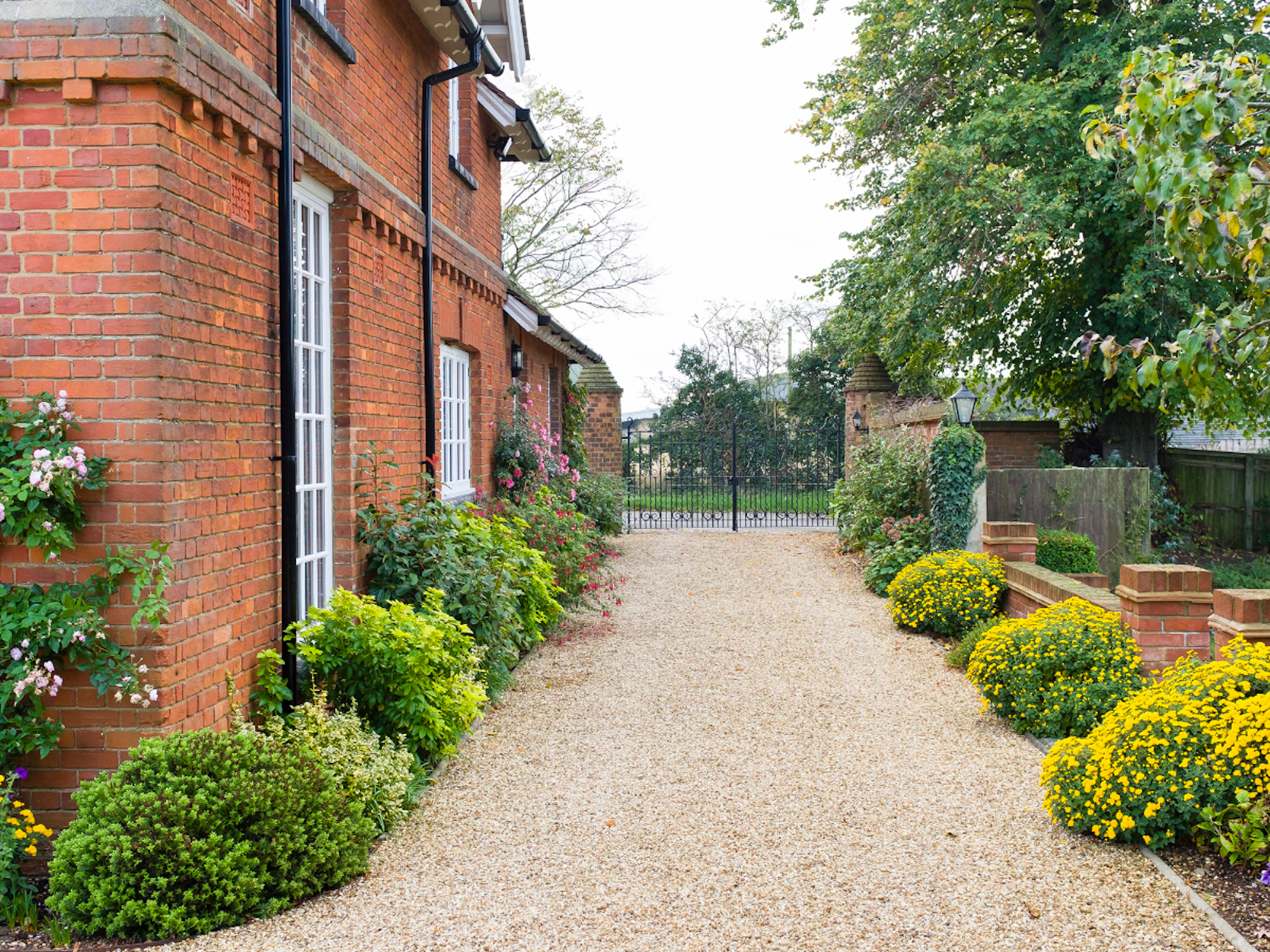
Why gravel edging is essential for high-traffic commercial spaces
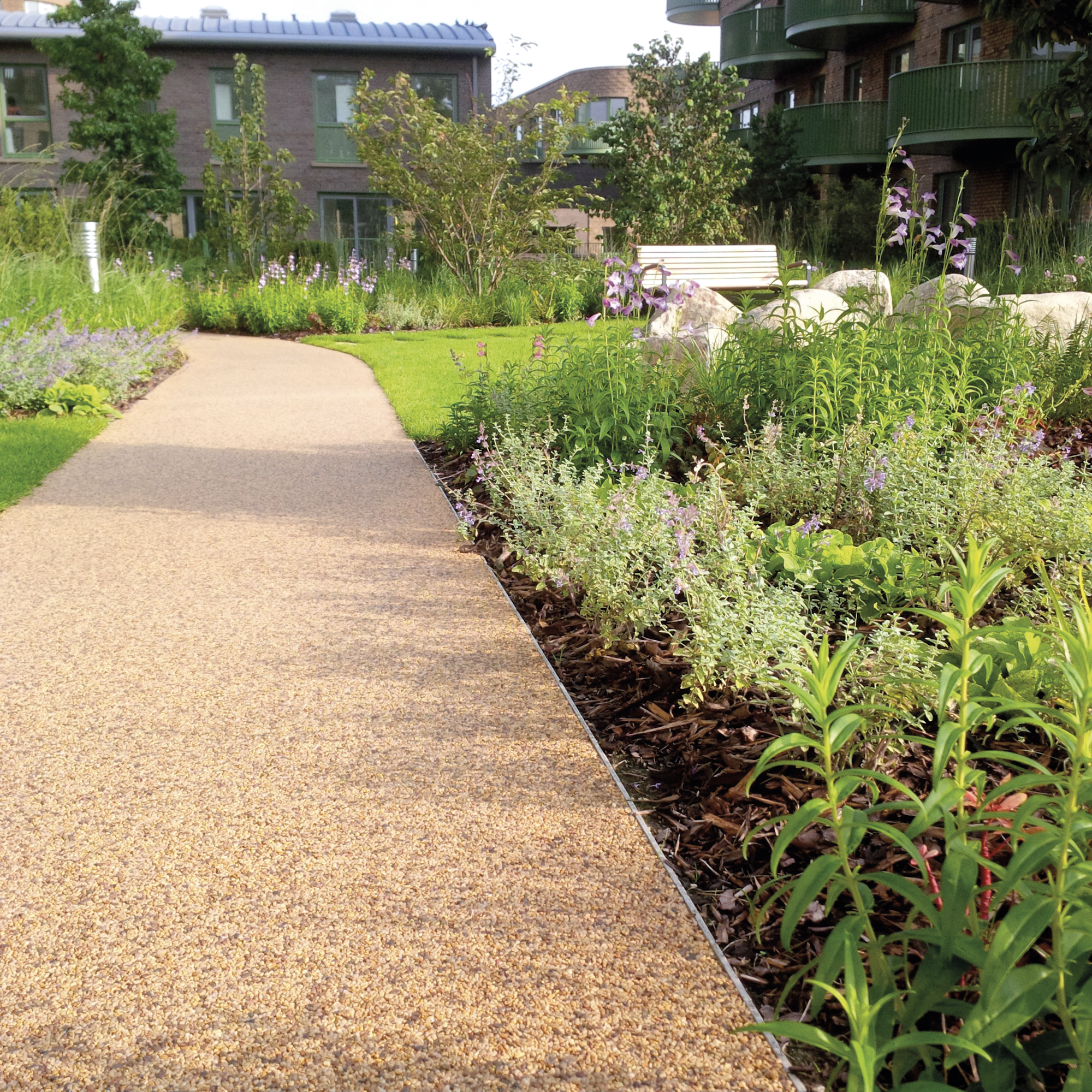
In commercial landscapes that see constant footfall, such as business parks, hospitality venues and public spaces, gravel is a popular surface choice for its clean look, permeability and natural aesthetic. But without proper edging, gravel can quickly become a maintenance headache. It shifts, spreads and loses definition, especially in high-traffic zones, leading to uneven surfaces, safety concerns and frequent repairs.
In this blog, we will explore the specific challenges of managing high-traffic commercial landscape, how gravel edging works and why metal edging is the smart, long-term solution for keeping gravel looking sharp and performing as intended. We will also look at how it enhances safety, reduces maintenance and complements modern design.
The challenges of high-traffic commercial landscapes
Designing and maintaining commercial outdoor spaces comes with unique challenges. These spaces must not only look appealing, but they need to withstand relentless use, support safe navigation and remain cost-effective over time.
In high-traffic areas like retail parks or public spaces, wear and tear is inevitable. Constant footfall, delivery access, changes in weather and routine cleaning all contribute to the rapid breakdown of poorly defined surfaces.
Gravel, while visually appealing and practical, is especially vulnerable to displacement without the right structural support.
Without proper containment, gravel paths and surfaces begin to spill into adjacent areas, creating messy, uneven edges. This can cause several problems:
- Increased maintenance costs due to constant regrading and cleaning
- Trip hazards and safety concerns for pedestrians and mobility users
- Loss of visual definition, making outdoor spaces appear untidy or poorly maintained
- Drainage issues, as displaced gravel can block surface water flow or drainage systems
In busy commercial settings, it is essential to have landscape solutions that offer durability and precision. Starting with how loose materials like gravel are controlled and contained. This is where well-designed edging becomes essential.
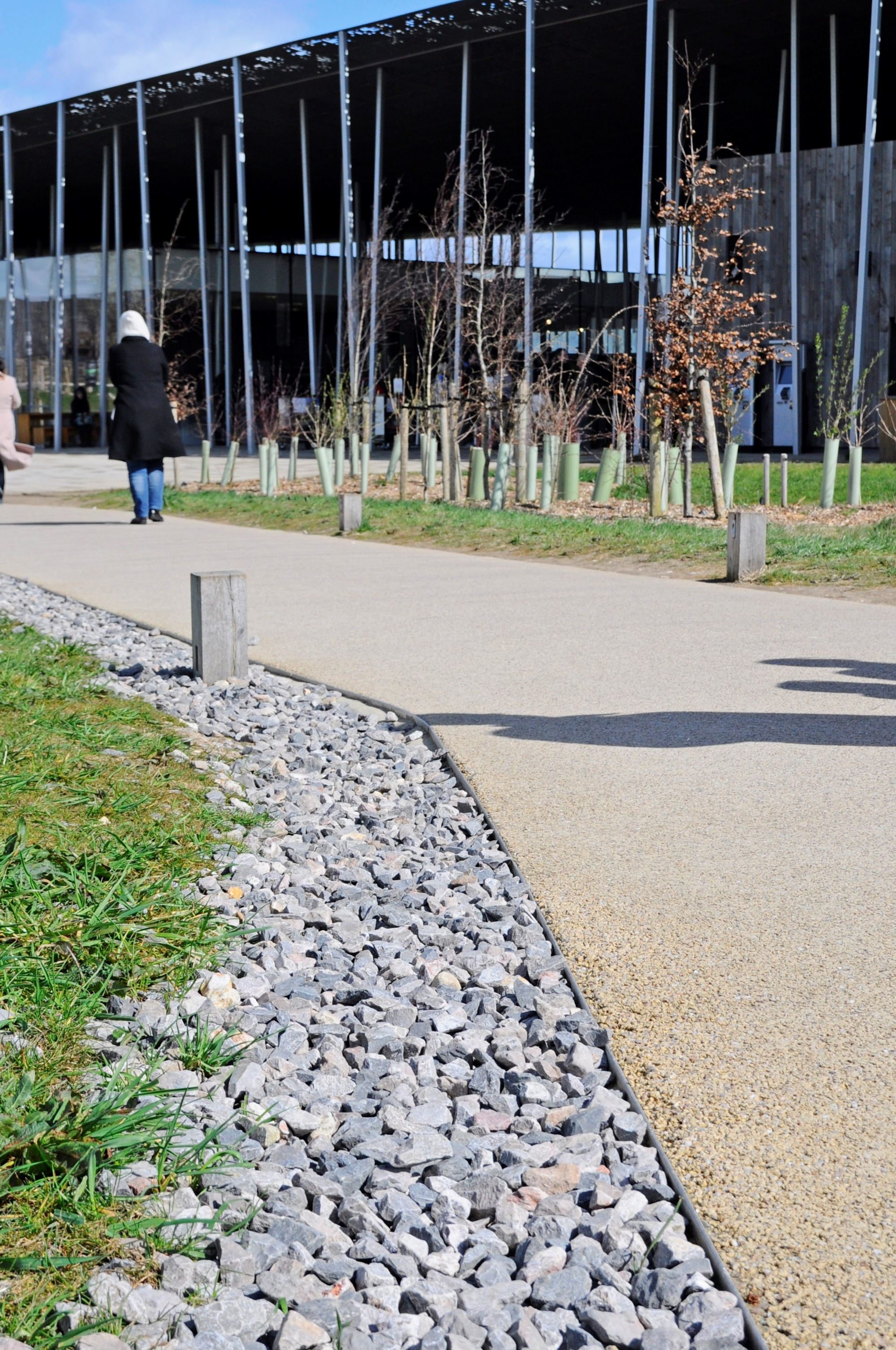
What is gravel edging and how does it work?
Gravel edging, also known as border edging, is a structural element used to create a defined boundary around gravel areas such as driveways, walkways, seating zones or planting beds. It plays a vital role in both the functionality and appearance of commercial landscapes.
Gravel edging:
- Prevents gravel displacement: It stops gravel from spilling into adjacent surfaces like lawns, paving or planting areas.
- Creates clean, defined lines: It adds structure and clarity to the landscape, making it look well-maintained and professional.
- Supports long-term performance: Gravel edging reduces the need for ongoing maintenance causes by shifting.
- Improves safety: Edging helps minimise trip hazards by maintaining an even, contained surface.
Gravel edging acts as a low-profile barrier installed at the edge of gravel zones. It sits flush with or slightly below the gravel surface, creating a clear boundary that keeps the gravel in place, even under the stress of frequent foot-traffic or weather-related erosion.
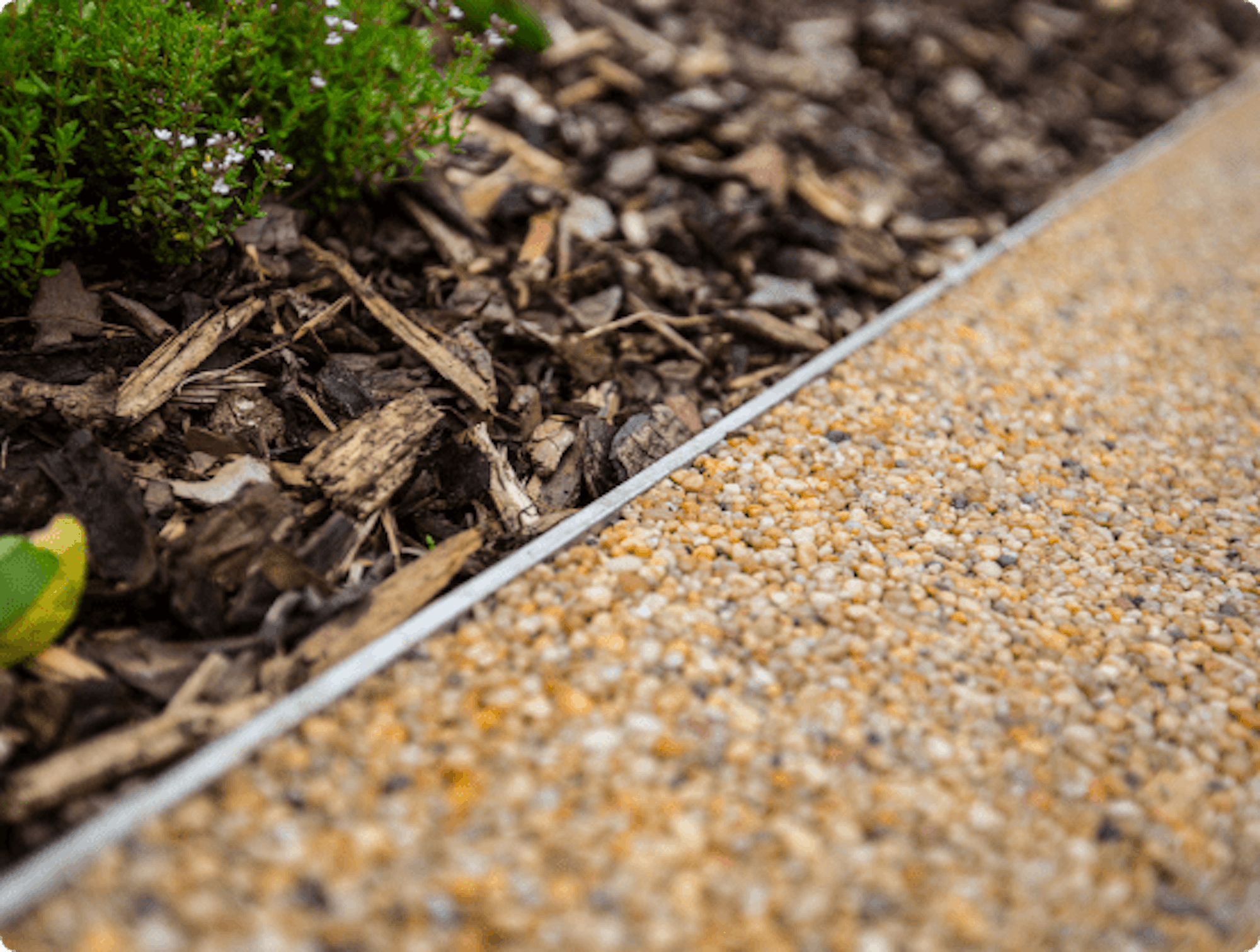
Key benefits of gravel edging in busy commercial environments
In high-traffic commercial landscapes, every design choice needs to balance form and function. Gravel edging offers a range of advantages that go beyond basic containment.
Enhancing durability and reducing maintenance costs
Commercial spaces endure constant use from pedestrians, vehicles, cleaning crews and seasonal weather. Without proper edging, gravel is prone to spreading, erosion and compaction.
With well-installed metal edging, you get:
- Long-term stability of gravel surfaces, even under heavy use
- Prevention of gravel migration into lawns, paving or drains
- Reduced need for regrading or replenishing gravel, saving time and money
- Corrosion-resistant materials that last for years without cracking or degrading
Improving safety and accessibility for pedestrians
Loose or scattered gravel can create uneven walking surfaces, increasing the risk of trips, falls or difficulty for wheelchair and stroller users.
Gravel edging helps improve safety by:
- Maintaining clear boundaries and level transitions between surfaces
- Preventing loose gravel from encroaching onto walkways or access routes
- Supporting compliance with accessibility standards in public environments
- Providing visual cues for changes in terrain or usage areas
Design flexibility: Integrating gravel edging with modern architecture
Gravel edging, when designed with aesthetics in mind, can enhance the overall look and feel of a space.
Metal edging offers architects and designers:
- Clean, minimalist lines that complement contemporary buildings
- Flexible installation along curves, straight edges or complex layouts
- Discreet visibility, keeping attention on the gravel and surrounding features

Coosing the right gravel edging material for your project
When selecting gravel edging for a commercial project, the material you choose can have a major impact on the long-term performance, safety and appearance of your landscape. While several materials are available, not all are suited for the demands of high-traffic environments, and we believe metal edging stands out above the rest.
Why metal edging stands out
Metal edging, particularly in materials like steel and aluminium, offers a superior combination of strength, longevity and visual precision. It is specifically designed to meet the challenges of demanding environments such as:
- Retail parks and hospitality spaces
- Urban plazas and pedestrian walkways
- Corporate and education facilities
The key advantages of metal edging include:
- Durability: Resistant to bending, cracking or warping, even under continuous foot or vehicle traffic
- Low maintenance: Withstands weather, wear and landscaping equipment without the need for frequent repairs
- Clean aesthetics: Provides crisp, minimal lines that blend into both traditional and contemporary designs
- Design flexibility: Easily curves or angles to match complex site layouts without losing structural integrity
- Sustainability: Often made from recyclable or recycled materials and supports long-term environmental goals
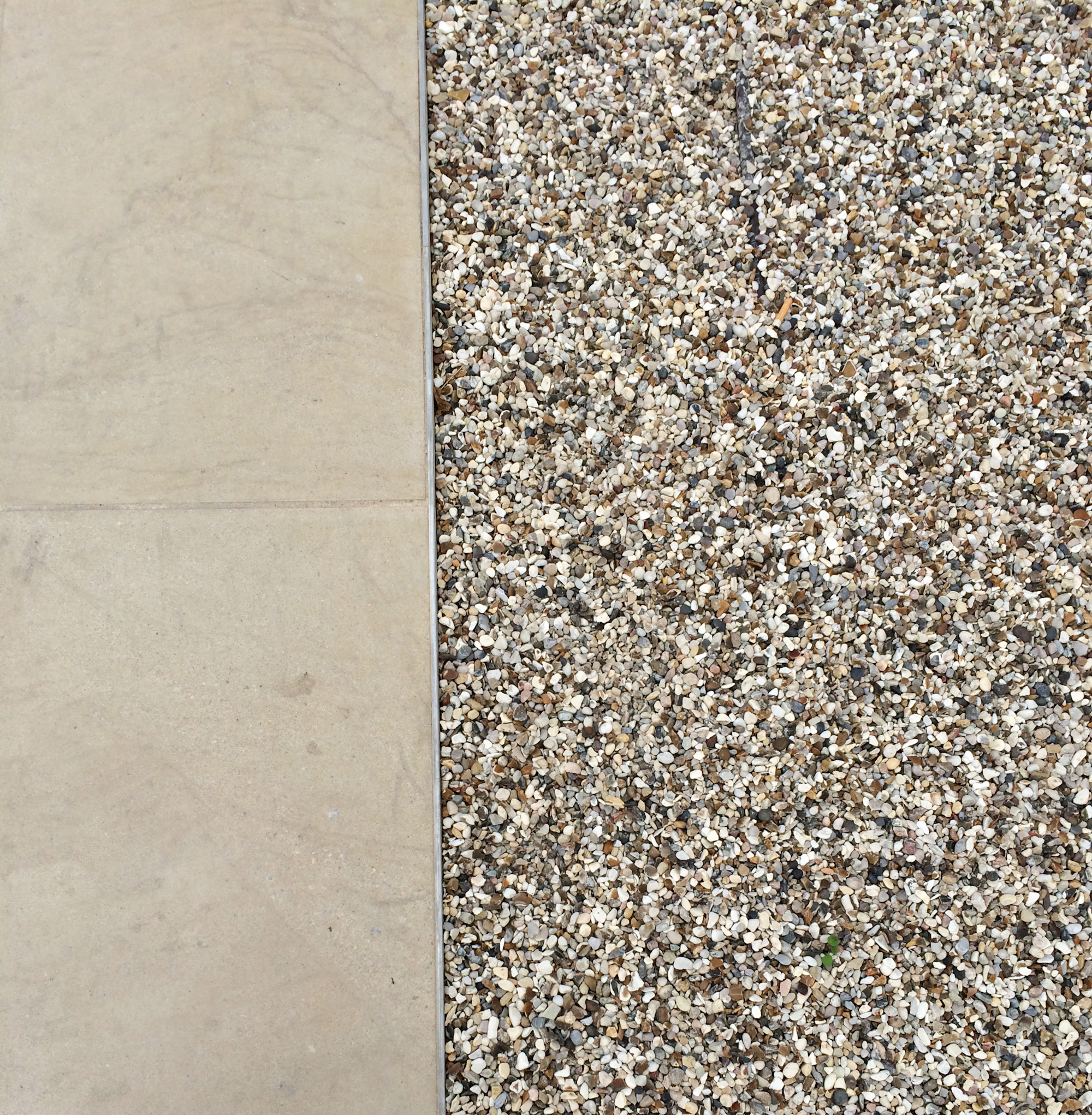
Gravel edging from Kinley
Choosing the right gravel edging is not just about keeping materials in place, it is about ensuring your commercial landscape performs under pressure, looks great all year round and stands the test of time.
At Kinley, we understand the demands of high-traffic environments and the importance of detail in modern landscape design.
Our range of metal edging solutions are engineered for precision, durability and visual appeal. Whether you are designing curved pathways, defined gravel zones or intricate architectural layouts, Kinley’s metal edging provides:
- Long lasting performance
- Clean, modern lines
- Flexible design options
Trusted by landscape architects, designers and contractors across the UK and beyond, Kinley products help create landscapes that are as practical as they are beautiful.
Explore our full range of gravel edging solutions or get in touch with our experts today to get started on your project.
